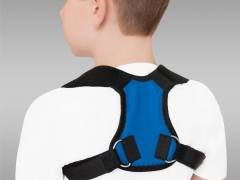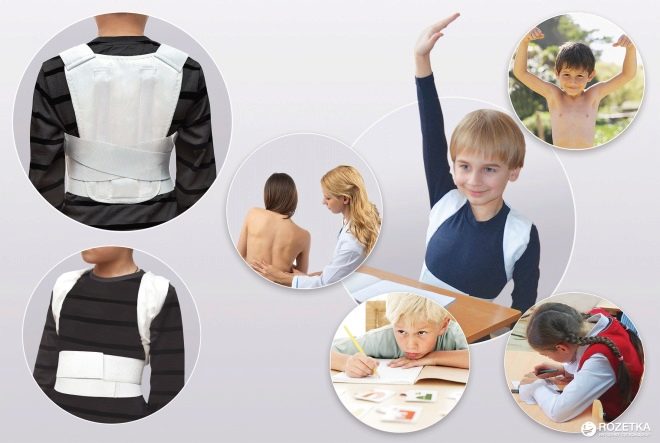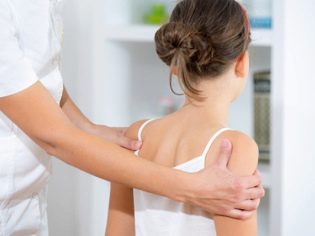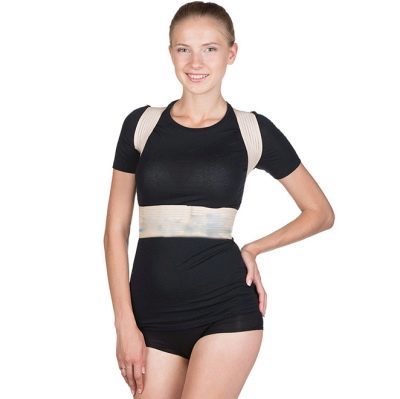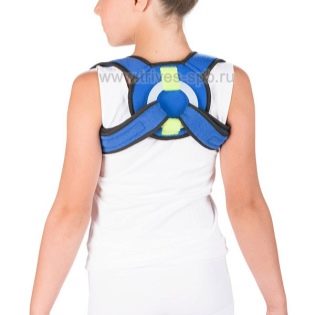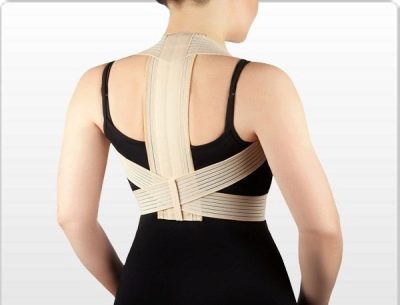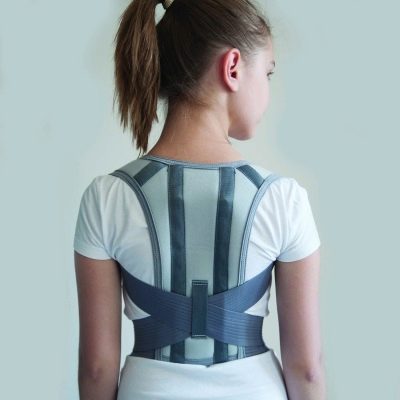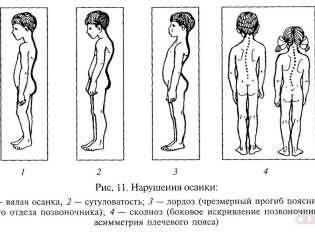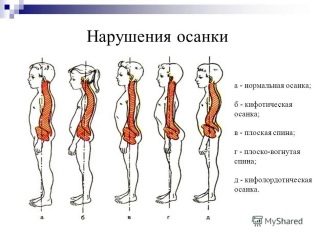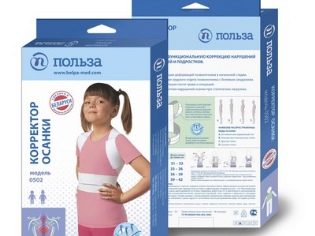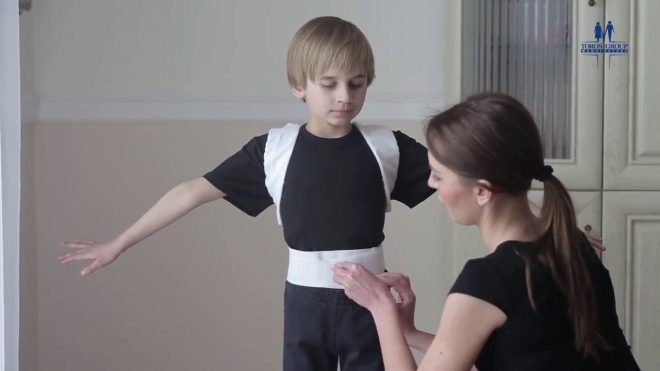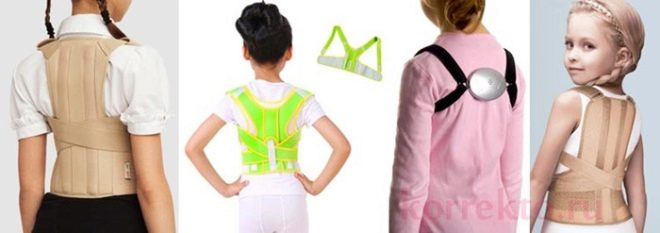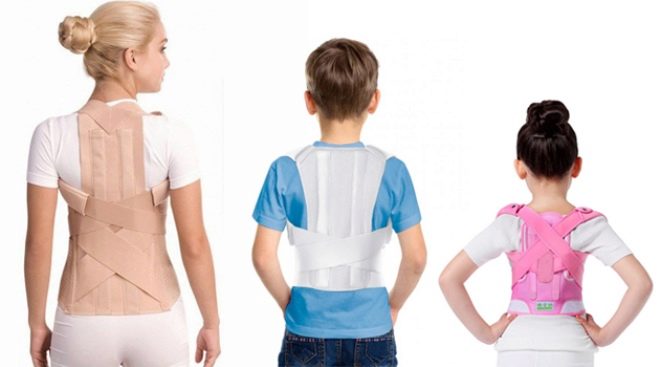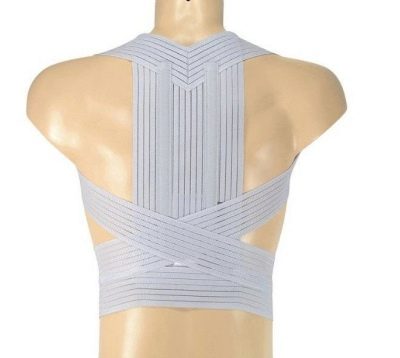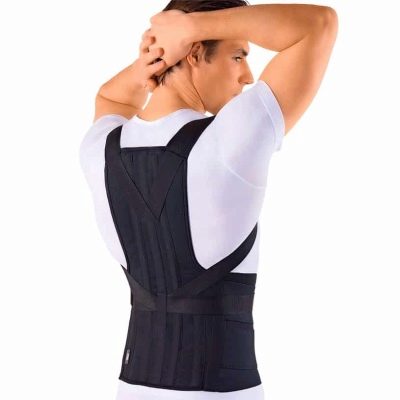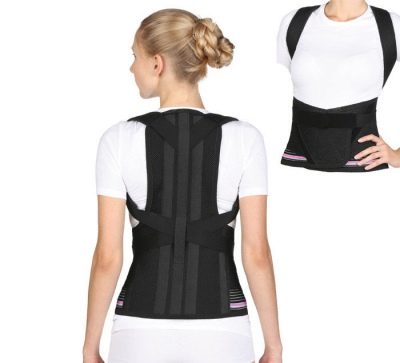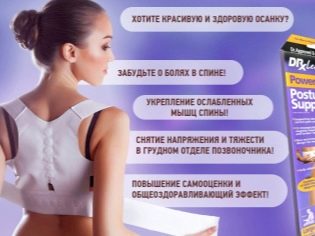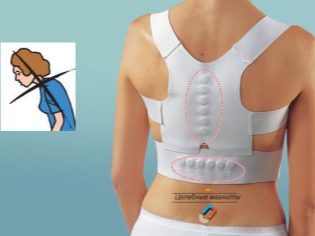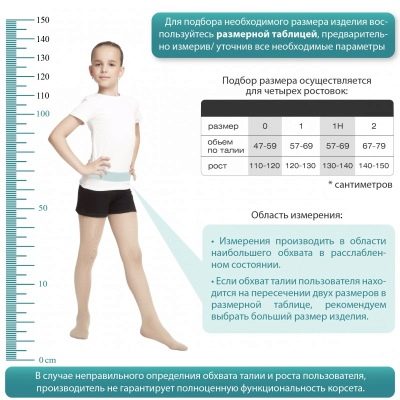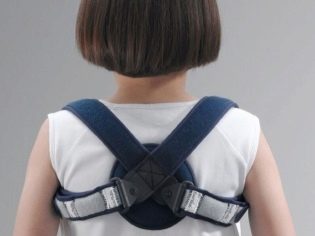What posture correctors for children are and what to consider when choosing?
Modern children who spend more time not on the games on the street, but on computers, often suffer from impaired posture and problems with the locomotor system. Constantly pull up the child so that he does not slouch, does not hunch and does not sit half-turned, working and busy parents have no opportunity. In matters of prevention and in the treatment of problems that have arisen with children's backs, special devices, called posture correctors, will help moms and dads. What they are and how to choose the right, we will tell in this article.
What it is?
Correctors posture called orthopedic devices that allow the child to maintain posture. They hold the spine and muscles, which are responsible for the stable location of individual vertebrae, in the anatomically correct position. For different types of health problems, various correctors have been developed and are available.
Much depends on what type of pathology will be detected by an orthopedic surgeon. If your child has an initial stage of scoliosis, then a children's reclinator may be quite enough, with more pronounced disorders of posture, fixers may be recommended, and in the recovery period after spinal injuries a corset for the spine will come to the rescue.
You don’t have to make a choice yourself - only a doctor can answer the question of what kind of device your child needs.
When is it necessary?
Proofreaders are needed in the complex treatment of spinal curvature, posture disorders, post-traumatic conditions. They perform a fairly simple, but very important function - they remove some of the load from the muscles that hold the spine, and allow the vertebrae to occupy the correct position. In this case, the child does not need to constantly remember the need to sit straight and do not slouch. To do this to him purely mechanically will not give posture corrector.
At the initial stages of violations (and sometimes for prophylaxis), the children's recliner will help, which consists of two straps in the form of eight, which are worn on the shoulders. The reclinator actually takes the shoulders back, aligns the shoulder blades and prevents the child from stooping. You can wear it at school and at home.
Chest corset is recommended for scoliosis of the thoracic spine. It resembles a reclinator, but is equipped with additional stiffening ribs. This corrector is most often recommended for children who have already been diagnosed with first-degree scoliosis or cervical osteochondrosis. The exception is made by children till 4 years, their chest correctors are contraindicated.
With scoliosis 1-2 degrees, during rehabilitation after compression fractures of the vertebrae in the thoracic region, as well as kyphosis, more serious orthopedic products are recommended, for example, thoracolumbar posture corrector. It resembles a bullet-proof vest, combining a reclinator, a wide restraint belt and a stiff back.
The list of diseases for which posture correctors are applied is quite wide. Here are just some of them:
- scoliosis;
- lumbar lordosis;
- kyphoscoliosis;
- kyphosis;
- osteochondrosis radicular syndrome;
- post-traumatic conditions.
Contraindications for wearing
Like any orthopedic device, posture correctors have their own contraindications.For this simple reason, you should not choose a corrector yourself with the goal of teaching the child to just keep the backrest straight, the consequences of such a self-assignment can be more than deplorable.
Thoracolumbar corsets are not recommended for younger children. For them are more suitable soft lyamochnye reclinators.
Children under 12 years are not recommended fully rigid corset-clamps, although in individual cases, orthopedists prescribe them if necessary. Other types of proofreaders must clearly correspond to their purpose.
A contraindication common to all is an allergic reaction to the materials from which the product is made. If a child has a rash, scratching, irritation on the skin of a child after a short-term orthopedic fixture, you should discard the relation and consult with the doctor who prescribed the wearing of the corrector.
Contraindication is also considered to be a violation of the integrity of the skin in those parts of the body with which the corset or reclinator is in contact. First you need to contact a dermatologist and undergo appropriate treatment, and only then begin to wear a posture corrector.
Sometimes wearing a corset can adversely affect the work of the heart and lungs. Therefore, pathologies of the cardiovascular system and diseases of the lungs can sometimes act as contraindications, but this issue is solved individually.
Kinds
As already mentioned, there are several types of proofreaders:
- reclinators;
- breast correctors;
- thoracolumbar devices.
The orthopedic effect of all types of correctors is difficult to overestimate. But they should be used in compliance with clear recommendations of the orthopedic surgeon. Thus, in case of a clavicle fracture, a child can do with both a regular reclinator and a semi-rigid breast corrector, this depends on the type and severity of the fracture, and when recovering from a spine fracture, the thoracolumbar products are best suited.
Congenital curvatures, which are considered the most severe, as well as rapidly progressing scoliosis and kyphosis (in children with cerebral palsy, congenital difference in the length of the lower extremities) may require wearing different types of correctors depending on the age and exact type of spinal lesion.
Three types of posture correctors differ in design. The simplest ones are reclinators, the most complex ones are thoracolumbar rigid and semi-rigid corsets.
Browse popular models
Modern orthopedic salons offer a huge selection of manufacturers of such products. The most popular today are brands such as:
- Trives;
- Orliman;
- OttoBock;
- "Yew".
These manufacturers have a rich history, they use only natural hypoallergenic materials, a well-thought-out construction that does not give the child any unpleasant sensations while wearing. As for the list of the most popular models, today there are several positions that are in greatest demand among Russian parents.
RB1068 OttoBock
This reclinator belongs to semi-rigid proofreaders, but has elastic inserts that are attached with velcro. Although the product belongs to the reclinator, orthopedists rightly refer it to the variant of a soft and careful corset, since the stakes in it are arranged so that the space between the shoulder blades is fixed. You can wear it under clothing. Thanks to quality materials, the product, as a rule, does not cause allergies.
Such an expensive reclinator is expensive, and there's nothing you can do - the manufacturer does not make an economy option in principle. But in the orthopedic salon you can find five versions of the product - for a child or teenager of any body and build.
KOR-M3 Tisa
This is a popular thoracolumbar corrector, which is recommended when it is necessary to firmly fix the chest and waist. It should not be used for prophylaxis, as the device is intended for correction for strict medical reasons.
To wear it is quite difficult, but over time the child gets used. Usually such an orthopedic device is recommended for adolescents. Wear the corrector no more than 4 hours a day. This model has many contraindications. But it is inexpensive and affordable for many.
Trives EVOLUTION T-1702
The stiffening ribs of this product are positioned so that when you try to slouch, pressure is put on the abdominal area. This corset is shown not only for the correction of posture, but also for prophylactic wearing. Breathable materials, water-repellent, and therefore wearing a corrector will not cause difficulties and inconvenience.
The tapes in the back area do not stretch, even after prolonged use, the corrector continues to maintain its shape and securely fixes the spine in the correct position. The product has three levels of height, and therefore suits a large group of patients. Doctors often call it universal.
Corrector from Trives is not used for severe forms of spinal pathologies, as well as for injuries of the spinal column.
Posture Support Magnetic Corrector
This model is equipped with additional magnetic elements. According to the manufacturers, they have an incredible therapeutic effect. And for this reason, such proofreaders are usually not recommended for children. For teens, the manufacturer has several sizes that are ideal for various pathologies of the back.
The downside is that the effect of magnetic fields on the body of children and adolescents is not fully understood, but parents who chose this option claim that the child not only began to keep his back straight, but also feels much better overall.
How to choose?
Before choosing, you need to receive an appointment from the orthopedic surgeon, in which he will describe the type of problem and recommend a certain type of posture corrector. After that, parents should measure the child's chest circumference, waist, and find out the exact growth of the child. These data should be sent to the orthopedic salon, the parameters will help you and the salon specialist to determine the size of the product. The specific size is not standard for all manufacturers. If one size of the Tisa model came up to you, this does not mean that it is worth looking at the same size, but already in the Trives lineup.
When choosing a corset or reclinator, do not try to save on material. Only good, natural materials that hold the air and do not get wet, provide a child with comfort when worn.
For children who are in a period of intensive growth (6-7 years old - 14-15 years old), if possible, a corset or reclinator should be made to order on the list of appointments of the orthopedist. It will cost more, but a positive result will not take long to wait. Orthopedic devices are sold in individual packages. Do not be lazy to try the corrector right in the salon to avoid misunderstandings at home.
How to wear?
Carry posture correctors according to individual purpose. Some children are recommended to wear the product systematically, and others - 2-3 hours a day and no more. But at the initial stage, an orthopedic device is always recommended to be worn little by little - from 5-10 minutes increasing the wearing time to an hour, then to an hour and a half, etc.
The cotton T-shirt, dressed under a corset or a reclinator, will save the child from rubbing and prickly heat.
Elements of the corrector must be cleaned according to the instructions.
Reviews
Reviews of doctors about posture correctors are ambiguous. Some experts trust such devices, others do not make special bets on them. But there is a general medical opinion that wearing correctors is quite justified in the complex treatment.
Special love parents enjoy proofreaders with a sound signal. When the child starts to hunch, the body position sensor triggers, which gives a loud beep. This teaches the child to self-control.
Experienced parents do not advise buying correctors online at suspiciously cheap prices. In this market a lot of fakes.
On how to choose a posture corrector to the child, the orthopedic surgeon will tell in the video below.
